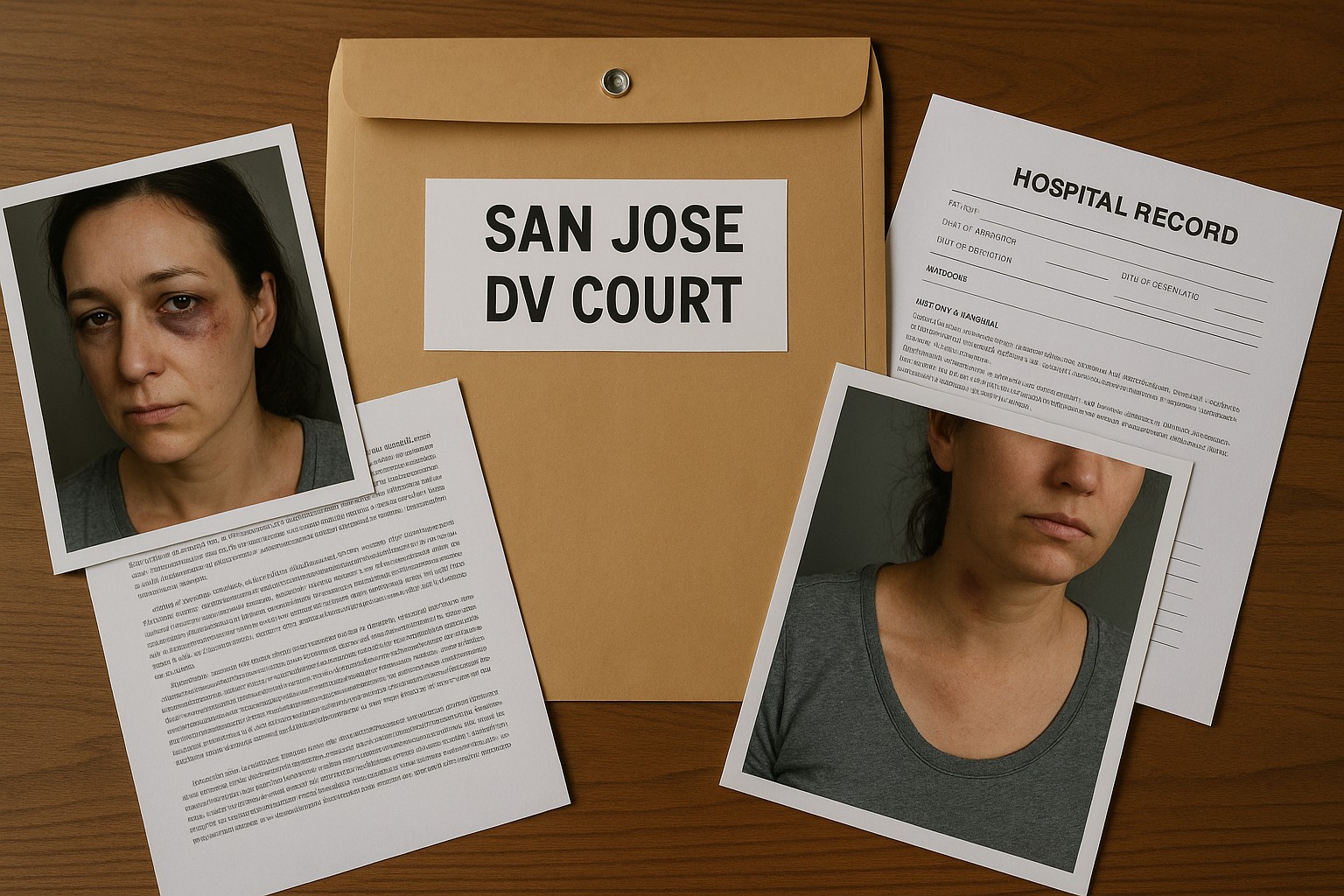Evidence Package Masterclass: Preparing Photos, Texts, and Hospital Records for San Jose DV Court
This guide provides San Jose survivors with a masterclass on preparing a court-ready evidence package, including detailed instructions on documenting physical injuries, archiving digital messages, and leveraging medical records for a DVRO case.

In the fight for safety, a survivor's testimony is powerful, but a well-prepared evidence package is often the key to unlocking legal protection. For survivors in San Jose, presenting a comprehensive, organized set of documents to the Santa Clara County Superior Court can make all the difference in a Domestic Violence Restraining Order (DVRO) case. This masterclass provides a detailed guide on how to gather and prepare the most crucial forms of evidence to build a strong case.
The Foundation: Why Your Evidence Package Matters in San Jose Court ⚖️
Judges rely on evidence to make a decision. An "evidence package" is a collection of documents that corroborates your testimony, creating a clear and undeniable record of the abuse. In San Jose, a strong package helps the court understand the full scope of a situation, especially when dealing with patterns of coercive control that may not involve physical violence.
1. Masterclass on Physical Evidence (Photos) 📸
If you have physical injuries, documenting them correctly is critical. Follow these steps to ensure your photos are "court-ready":
- Act Quickly and Seek Medical Care: The first step is always to ensure your safety and seek medical attention. A doctor’s notes and a diagnosis from a San Jose hospital or clinic are powerful third-party evidence.
- Use Good Lighting and Context: Take photos in a well-lit area. For each injury, take a wide shot to show its location on your body, followed by a close-up.
- Include Scale and Date: In at least one photo, place a common object like a ruler or a coin next to the injury for scale. Ensure the photo's timestamp is enabled, or take a picture of a newspaper or digital clock with the injury.
- Do Not Delete: Never delete any of the photos, even if they are not perfect. They are part of a complete record.
2. Archiving Digital Evidence (Texts, Emails & Social Media) 📱
Digital messages and posts are frequently the most compelling evidence of abuse.
- Screenshot Everything: Take screenshots of all relevant text messages, emails, and social media posts. This includes threats, harassment, abusive language, and controlling behavior.
- Include Key Information: For each screenshot, ensure it clearly shows the sender, the recipient, the date, and the time. This proves the message's authenticity.
- Print and Organize: Print out all relevant screenshots and organize them in chronological order. Create a simple index or timeline to make it easy for the judge to follow.
- Back It Up: Save all digital evidence to a secure, private cloud storage service that your abuser cannot access.
3. Leveraging Medical Evidence (Hospital Records) 🏥
Medical records are an essential part of an evidence package. They serve as objective proof of your injuries and the date they occurred.
- Request Your Records: In California, you have the right to request your medical records. Contact the medical records department of any San Jose hospital or clinic you visited and request a copy of your full file.
- Use MyChart & Patient Portals: Many healthcare providers in San Jose use online portals like MyChart. These portals allow you to easily download visit summaries, doctor's notes, and lab results, which can be invaluable evidence.
- Look for Key Details: When reviewing your records, look for any notes from the doctor or nurse that describe the cause of your injuries, as this can be powerful evidence in court.
Putting It All Together: Creating a Court-Ready Package
Once you have gathered all your evidence, organize it in a binder or a folder in chronological order. Create a simple table of contents that lists the type of evidence (e.g., "Photos of Bruises," "Texts from Abuser," "Hospital Records") and the dates it covers. This organization makes it easy for the court to review your case and understand the full pattern of abuse.
[object Object]
1. Do I need a lawyer to prepare this evidence package?
You do not legally need a lawyer, but it is highly recommended. A legal aid organization in San Jose can help you prepare a professional and comprehensive package that meets all court requirements.
2. Is it okay if my photos aren't professional quality?
Yes. Your photos do not need to be professional. The most important things are that they are clear, in focus, and include the date and context to be easily understood by a judge.
3. How far back can I go to collect evidence?
You can and should collect evidence from as far back as you can to show a pattern of abuse. A DVRO case is often about a history of abuse, not just a single, recent incident.
4. Can I use screenshots from my old phone?
Yes. As long as the screenshots clearly show the message content, sender, date, and time, they are valid evidence. If possible, save them to a secure location before you get rid of the old phone.
5. What if my abuser deleted the evidence from their phone?
While this can make it more difficult, the evidence you have saved from your own device is still valid. Your testimony, supported by your preserved evidence, is the most important part of your case.
6. Where can I get help in San Jose to prepare my evidence package?
The Santa Clara County Superior Court has a Family Justice Center and works with organizations like the YWCA Golden Gate Silicon Valley and Next Door Solutions to Domestic Violence, which provide free legal and advocacy services for survivors.
